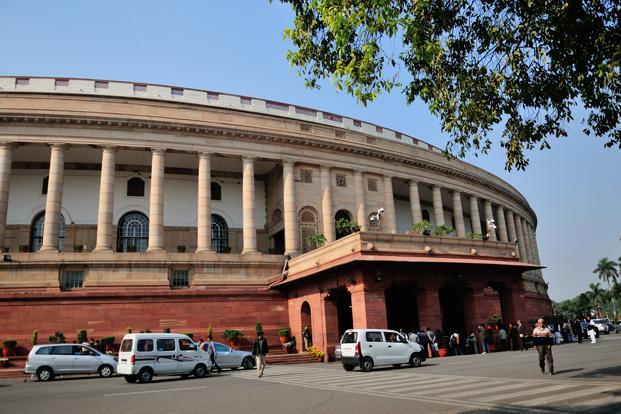Now Reading: ‘Let there be equity’- NCLAT declares that an equitable right exists between Financial Creditors and the Operational Creditors
-
01
‘Let there be equity’- NCLAT declares that an equitable right exists between Financial Creditors and the Operational Creditors
‘Let there be equity’- NCLAT declares that an equitable right exists between Financial Creditors and the Operational Creditors
The Hon’ble National Company Law Appellate Tribunal (“NCLAT”)while hearing a batch of appeals challenging the validity of the Resolution Plan submitted by ArcelorMittal India Pvt. Ltd (“Resolution Applicant”) and approved by the National Company Law Tribunal, Ahmedabad Bench (“Adjudicating Authority”), passed a landmark judgment, declaring that there exists an equitable right between the Financial Creditors and the Operational Creditors in terms of the amount provided in a Resolution Plan, and that the power of the distribution of the amount of the Resolution Plan rests with the Resolution Applicant and not with the Committee of Creditors (“CoC”).
In the Corporate Insolvency Resolution Process initiated against Essar Steel India Limited (“Corporate Debtor”), being one of the 12 big defaulters identified by the RBI, the CoC approved the Resolution Plan submitted by the Resolution Applicant which was thereafter approved by the Adjudicating Authority, with certain modifications vide Order dated 08 March 2019 (“Impugned Order”). The Impugned Order was challenged before NCLAT by various financial and operational creditors as well as the Promoter of the Corporate Debtor, which was disposed of by this common judgment.
The impugned Order was challenged on the ground that the Resolution Applicant is ineligible to submit the Resolution Plan in terms of Section 29A of the IBC. It was held that the matter has already been decided by the Hon’ble Supreme Court in ArcelorMittal India Private Limited v. Satish Kumar Gupta and Ors.[1]wherein the Resolution Applicant has been held to be eligible to submit a Resolution Plan. Thus, the re-agitation of the settled matter would be barred by the principle of Res Judicata.
Moreover, it was also held that once the debt payable by the Corporate Debtor stands cleared in view of the approval of the Resolution Plan by making payment in favor of the lenders, the effect of ‘Deed of Guarantee’ comes to an end as the debt stands paid. The guarantee having become ineffective in view of payment of debt by way of resolution to the original lenders (Financial Creditors), the question of right of subrogation of the guarantor’s right under Section 140 of the Contract Act and the right to be indemnified under Section 145 of the Contract Act does not arise. This finding is likely to have wide ramifications, as most Resolution Plans in the past permitted Financial Creditors to recover their residual dues from the personal and corporate guarantors.
A debate that this judgment doesn’t settles must be understood in the context of facts of this case. In the instant case, the Financial Creditors were categorized in four categories and the criterion for this distinction was secured and unsecured with the amount of debt.If Section 5(7) and Section 5(8) of IBC are read together,there is no distinction made between one or other ‘Financial Creditor’. All persons to whom a financial debt is owed by the ‘Corporate Debtor’, which debt is disbursed against the consideration for time value of money, whether they come within one or other clause of Section 5(8), all of such person form one class i.e. ‘Financial Creditor’ they cannot be sub-classified as ‘Secured’ or ‘Unsecured Financial Creditor’ for the purpose of preparation of the ‘Resolution Plan’. The Hon’ble NCLAT held that the Financial Creditors cannot be discriminated on the ground of being ‘Secured’ or ‘Unsecured Financial Creditors’ for the purpose of distribution of proposed amount amongst stakeholders in the Resolution Plan.
On the contrary,Operational Creditors were categorized in three categories. It was held that from the definition of ‘Operational Debt’, the following classification has been made by the Parliament: (i) Those who have ‘supplied goods’ and ‘rendered services’ and thereby entitled for payment. (ii) The employees for their services. (iii) Statutory dues. It was held that ‘Operational Creditors’ can be classified in three different classes for determining the manner in which the amount is to be distributed to them. However, they are to be given the same treatment, if similarly situated.
In view of the above, the Hon’ble NCLAT observed that 100% payment in favor of the workmen and employees and Operational Creditors with claims of less than Rs. 1 Crore is not discriminatory as compared to the other Operational Creditors, who cannot claim 100% of their claims as they are not similarly situated to workmen & employees and the Operational Creditors whose admitted dues are less than Rs. 1 Crore. This finding is likely to be challenged as the NCLAT on one hand has permitted classification of Operational Creditors in various classes, but has rejected the classification of Financial Creditors, even when criteria was same.
More importantly, under the Resolution Plan, the CoC was empowered to decide the manner ofdistribution of amount to the Secured Financial Creditors.In this regard, the Hon’ble NCLAT held that the CoC has no role to play in the matter of distribution of the proceeds under a Resolution Plan as the members of the ‘CoC’ are an interested party are also not supposed to decide the manner in which the distribution is to take place. The CoC is only required to notice the viability and feasibility of the Resolution Plan, apart from other requirements as specified by the Board and ineligibility of the Resolution Applicant in terms of Section 29A of the IBC.
The issue of discrimination in the distribution of the amount to be disbursed under the Resolution Plan between the Financial Creditors and the Operational Creditors was discussed in detail by the tribunal. In this matter, the Operational Creditors had the following g In the Resolution Plan, 0 % of their debt was proposed to be paid, whereas the Financial Creditors were proposed to be paid 92.5% of their dues; and Claim of some of the Operational Creditors were notionally assessed at Re. 1/- (average) by the Resolution Professional without any basis. Subsequently, in spite of direction of the Adjudicating Authority, the Resolution Professional had not reflected their claims.
A huge discrimination was made by the ‘CoC’ in distribution of proposed amount to the ‘Operational Creditors’ qua ‘Financial Creditors’. Majority of the latter were allowed 99.19% of their claim amount, whereas ‘NIL’ in favor of the ‘Operational Creditors’. Such distribution was adjudicated not only discriminatory but also arbitrary. They have also discriminated amongst themselves on the ground that one ‘Financial Creditor’ is ‘Secured Creditor’ having no charge on project assets of the ‘Corporate Debtor’ and other has no charge on the project of the ‘Corporate Debtor’.
Section 30(2)(b) IBC mandates that a Resolution Plan must provide for the payment of the debts of Operational Creditors in such manner as may be prescribed by the Board which shall not be less than the amount to be paid to the in the event of a liquidation of the Corporate Debtor under Section 53. That means, the Operational Creditors should not be paid less than the amount they could have received in the event of liquidation out of the assets of the Corporate Debtor. It does not mean that they should not be provided the amount more than the amount they could have received in the event of a liquidation which otherwise amounts to discrimination. Section 53 of the IBC is not the criteria but a minimum bar.
In this matter, a few cases were not decided petitioners could go back to appropriate forum under Section 60, but on the decided claims were final and binding; Moreover, the ‘Financial Creditors’ in whose favor guarantee were executed as their total claim stands satisfied to the extent of the guarantee, they cannot re agitate such claim from the Principal Borrower.
These findings can be challenged as Section 31 IBC provides that the Resolution Plan, once approved by the Adjudicating Authority shall binding on the corporate debtor and its employees, members, creditors, guarantors and other stakeholders involved in the Resolution Plan. Further, the Successful Resolution Applicants would be susceptible to hidden claims arising out of issues pertaining to the Corporate Debtor which might not have been disclosed to them. Also, the approval of a Resolution Plan would be contingent on the outcome of future liabilities.There would be a lot of uncertainty for the Resolution Applicants;therefore less entity would be willing to become Resolution Applicants. In fact, IBC does not provide any mechanism for dispensation to such creditors whose dues will be adjudicated after the approval of the Resolution Plan.
The final issue was if any amount is found to have been generated as profit during the Corporate Insolvency Resolution Process after due verification by the Auditors, it should be distributed amongst all the Financial Creditors and the Operational Creditors on pro-rata basis of their claims subject to the fact that it should not exceed the admitted. Therefore, this judgment has settled and raised new questions of law, and hence, is a landmark in itself.
[1](2018) SCC Online SC 1733








